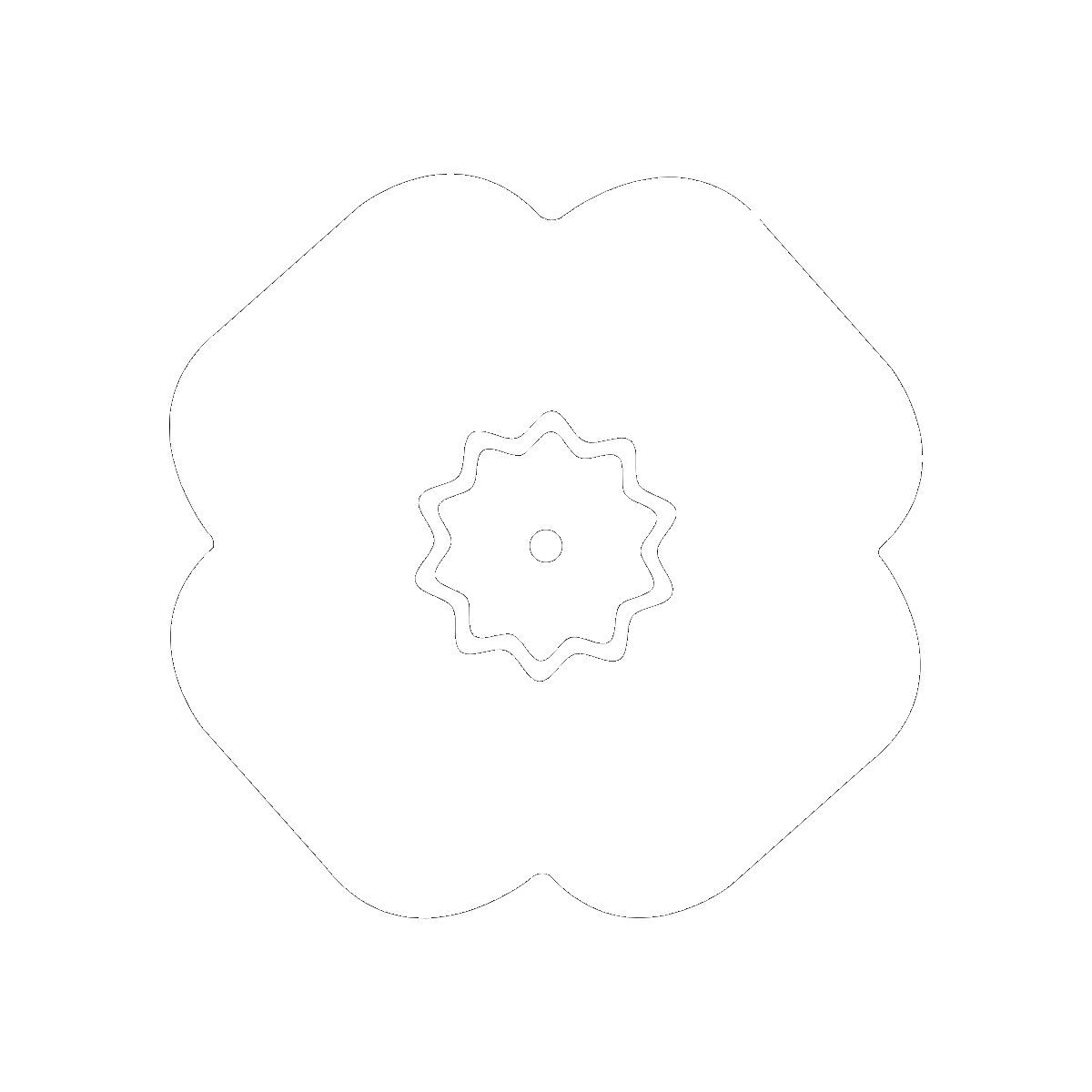Upgrade to LitCharts A+

Instant downloads of all 1953 LitChart PDFs(including Poppies).

LitCharts Teacher Editions. Teach your students to analyze literature like LitCharts does.

Detailed explanations, analysis, and citation info for every important quote on LitCharts.

The original text plus a side-by-side modern translation of every Shakespeare play.
Already have an account?Sign in
- Summary
- Themes
- Line-by-Line Explanation & Analysis
- Symbols
- Poetic Devices
- Vocabulary & References
- Form, Meter, & Rhyme Scheme
- Speaker
- Setting
- Context
- Resources
- Summary
- Themes
- Line-by-Line
Explanations - Symbols
- Poetic Devices
- Vocabulary &
References - Form, Meter, &
Rhyme Scheme - Speaker
- Setting
- Context
- Resources
 Downloadthis entire guide to “Poppies” as a printable PDF.Downloadthis LitChart! (PDF)
Downloadthis entire guide to “Poppies” as a printable PDF.Downloadthis LitChart! (PDF)
Question about this poem?
Have a question about this poem?
Have a specific question about this poem?
Have a specific question about this poem?
Have a specific question about this poem?
A LitCharts expert can help.
A LitCharts expert can help.
A LitCharts expert can help.
A LitCharts expert can help.
A LitCharts expert can help.
Ask us
Ask us
Ask a question
Ask a question
Ask a question
“Poppies” is a poem by the English poet Jane Weir, first published in 2005 as part of her collection The Way I Dressed. Written in response to the poet Carol Ann Duffy’s call for more war poems about the deaths of British soldiers in Iraq and Afghanistan, Weir’s poem imagines the trials and difficulties of war from the perspective of a mother who sends her child off to fight. The poem investigates this grief by comparing it, through an extended metaphor, to the more general feeling of anxiety that all parents face as their children prepare to enter a frightening and often violent world.
Get
Get LitCharts |  |
The Full Text of “Poppies”
The Full Text of “Poppies”
“Poppies” Summary
“Poppies” Themes
War, Parenthood, and Grief
Where this theme appears in the poem:
- Lines 1-35
Line-by-Line Explanation & Analysis of “Poppies”
Lines 1-6
Three days before ...
... around your blazer.Lines 7-11
Sellotape bandaged around ...
... of my face.Lines 11-16
I wanted to ...
... of your hair.Lines 16-18
All my words ...
... slowly melting.Lines 18-22
I was brave, ...
... were away, intoxicated.Lines 23-24
After you'd gone ...
... from its cage.Lines 25-29
Later a single ...
... of scarf, gloves.Lines 30-35
On reaching the ...
... on the wind.
“Poppies” Symbols
Poppies
Where this symbol appears in the poem:
- Line 2: “poppies”
Song Bird
Where this symbol appears in the poem:
- Line 24: “song bird”
Dove
Where this symbol appears in the poem:
- Line 25: “dove”
- Line 33: “dove”
“Poppies” Poetic Devices & Figurative Language
End-Stopped Line
Where end-stopped line appears in the poem:
- Line 3: “left,”
- Line 4: “petals,”
- Line 6: “blazer.”
- Line 7: “hand,”
- Line 17: “felt,”
- Line 22: “intoxicated.”
- Line 23: “bedroom,”
- Line 24: “cage.”
- Line 25: “tree,”
- Line 26: “me,”
- Line 29: “gloves.”
- Line 31: “memorial,”
- Line 32: “wishbone.”
- Line 33: “sky,”
- Line 35: “wind.”
Enjambment
Where enjambment appears in the poem:
- Lines 1-2: “Sunday / and”
- Lines 2-3: “placed / on”
- Lines 5-6: “blockade / of”
- Lines 8-9: “hairs / as”
- Lines 9-10: “shirt's / upturned”
- Lines 10-11: “softening / of”
- Lines 11-12: “nose / across”
- Lines 12-13: “at / being”
- Lines 13-14: “when / you”
- Lines 14-15: “impulse / to”
- Lines 15-16: “gelled / blackthorns”
- Lines 16-17: “words / flattened”
- Lines 18-19: “walked / with”
- Lines 19-20: “threw / it”
- Lines 20-21: “overflowing / like”
- Lines 21-22: “second / and”
- Lines 27-28: “busy / making”
- Lines 28-29: “without / a”
- Lines 30-31: “traced / the”
- Lines 34-35: “hear / your”
Caesura
Where caesura appears in the poem:
- Line 3: “graves. Before”
- Line 4: “lapel, crimped”
- Line 5: “red, disrupting”
- Line 9: “could, smoothed”
- Line 10: “collar, steeled”
- Line 11: “face. I”
- Line 12: “nose, play”
- Line 14: “little. I”
- Line 16: “hair. All”
- Line 17: “flattened, rolled, turned”
- Line 18: “melting. I,” “brave, as”
- Line 19: “you, to,” “door, threw”
- Line 20: “open, the”
- Line 21: “chest. A”
- Line 22: “away, intoxicated”
- Line 27: “walls, my”
- Line 28: “tucks, darts, pleats, hat-less, without”
- Line 29: “scarf, gloves”
- Line 34: “stitch, I listened, hoping”
Alliteration
Where alliteration appears in the poem:
- Line 2: “p,” “p”
- Line 3: “l”
- Line 4: “p,” “l,” “p”
- Line 5: “p,” “b”
- Line 6: “b,” “b,” “b”
- Line 7: “b,” “h”
- Line 8: “h”
- Line 9: “s”
- Line 10: “s,” “s”
- Line 13: “w”
- Lines 13-13: “w / h”
- Line 14: “w,” “r”
- Line 15: “r,” “f”
- Line 17: “f,” “f”
- Line 18: “w,” “w”
- Line 19: “w”
- Line 20: “o,” “o”
- Line 21: “s,” “s”
- Line 23: “b”
- Line 24: “b”
- Line 27: “s,” “s”
- Line 28: “w”
- Line 29: “w”
- Line 30: “t,” “t”
- Line 31: “w”
- Line 32: “w”
- Line 33: “s”
- Line 34: “s,” “h,” “h”
Assonance
Where assonance appears in the poem:
- Line 1: “ay,” “i,” “i,” “ay”
- Line 2: “a”
- Line 3: “i,” “i,” “i,” “a”
- Line 4: “a,” “e,” “e,” “a”
- Line 5: “a,” “e,” “a”
- Line 6: “i,” “i,” “a”
- Line 7: “a,” “a”
- Line 8: “a”
- Line 9: “a”
- Line 11: “a,” “a,” “o”
- Line 12: “os”
- Line 13: “o”
- Line 14: “i,” “i,” “i,” “u”
- Line 15: “u,” “i”
- Line 16: “a,” “o,” “ou”
- Line 17: “a,” “o,” “e”
- Line 18: “o,” “e”
- Line 19: “ou,” “o,” “e”
- Line 20: “o,” “o,” “o”
- Line 21: “ea,” “e,” “e”
- Line 22: “a,” “a”
- Line 23: “ou,” “o,” “oo”
- Line 24: “a”
- Line 25: “a,” “o,” “o”
- Line 29: “o,” “o”
- Line 30: “O,” “o,” “o”
- Line 31: “i,” “i,” “a,” “o”
- Line 34: “i,” “i”
Consonance
Where consonance appears in the poem:
- Line 1: “s,” “c,” “S”
- Line 2: “p,” “pp,” “d,” “d,” “p,” “l,” “d”
- Line 3: “d,” “d,” “l,” “r,” “r,” “r,” “l”
- Line 4: “p,” “nn,” “n,” “n,” “l,” “p,” “l,” “m,” “p,” “p,” “t,” “l,” “s”
- Line 5: “s,” “p,” “sms,” “p,” “p,” “r,” “r,” “d,” “r,” “p,” “bl,” “d”
- Line 6: “ll,” “b,” “b,” “n,” “d,” “r,” “n,” “d,” “r,” “bl,” “r”
- Line 7: “b,” “n,” “d,” “d,” “n,” “d,” “h,” “n,” “d”
- Line 8: “n,” “d,” “d,” “t,” “c,” “t”
- Line 9: “c,” “d,” “s,” “d,” “d,” “r,” “r”
- Line 10: “t,” “r,” “c,” “ll,” “r,” “s,” “t,” “l,” “s,” “f,” “t”
- Line 11: “f,” “c,” “z,” “s”
- Line 12: “c,” “p,” “s,” “p”
- Line 13: “k,” “s,” “k,” “w,” “w”
- Line 14: “w,” “r,” “l,” “ttl,” “r,” “s,” “s,” “t,” “l,” “s”
- Line 15: “r,” “r,” “r,” “ll”
- Line 16: “l,” “r,” “r,” “r,” “ll,” “r”
- Line 17: “f,” “l,” “tt,” “n,” “d,” “r,” “ll,” “d,” “t,” “r,” “d,” “nt,” “f,” “lt”
- Line 18: “l,” “l,” “lt,” “w,” “w”
- Line 19: “w,” “r,” “r,” “r,” “w”
- Line 20: “w,” “r,” “r,” “w”
- Line 21: “t,” “r,” “s,” “r,” “s,” “t,” “s,” “t,” “s”
- Line 22: “w,” “w,” “t,” “t”
- Line 23: “t,” “r,” “n,” “t,” “nt,” “r,” “b,” “r”
- Line 24: “r,” “s,” “d,” “s,” “b,” “d,” “r”
- Line 25: “L,” “t,” “r,” “l,” “fl,” “fr,” “r,” “tr”
- Line 26: “s,” “s,” “s,” “l”
- Line 27: “s,” “r,” “t,” “ch,” “rch,” “r,” “s,” “s,” “t,” “s”
- Line 28: “k,” “t,” “ck,” “s,” “ts,” “ts,” “t,” “ss,” “w,” “t”
- Line 29: “w,” “t,” “c,” “t,” “r,” “r,” “r,” “ts,” “s,” “c,” “r,” “s”
- Line 30: “r,” “t,” “t,” “r”
- Line 31: “r,” “w,” “r,” “m,” “m,” “r”
- Line 32: “n,” “n,” “t,” “t,” “w,” “n”
- Line 33: “ll,” “l,” “s”
- Line 34: “r,” “t,” “s,” “t,” “t,” “st,” “h,” “t,” “h,” “r”
- Line 35: “r,” “r”
Metaphor
Where metaphor appears in the poem:
- Line 5: “spasms of paper red”
- Lines 5-6: “disrupting a blockade / of yellow bias binding around your blazer.”
- Line 7: “Sellotape bandaged around my hand”
- Lines 10-11: “ steeled the softening / of my face”
- Lines 15-16: “the gelled / blackthorns of your hair”
- Lines 16-18: “All my words / flattened, rolled, turned into felt, / slowly melting”
- Lines 21-22: “A split second / and you were away, intoxicated”
- Lines 27-28: “my stomach busy / making tucks, darts, pleats”
- Lines 33-34: “The dove pulled freely against the sky, / an ornamental stitch”
Simile
Where simile appears in the poem:
- Lines 11-14: “I wanted to graze my nose / across the tip of your nose, play at / being Eskimos like we did when / you were little.”
- Line 32: “like a wishbone.”
Extended Metaphor
Where extended metaphor appears in the poem:
- Lines 1-35
“Poppies” Vocabulary
Select any word below to get its definition in the context of the poem. The words are listed in the order in which they appear in the poem.
- Armistice Sunday
- Poppies
- War Graves
- Lapel
- Spasms
- Blockade
- Yellow Bias Binding
- Sellotape
- Eskimos
- Blackthorns
- Intoxicated
- Tucks
- Darts
- Pleats
- Reinforcements
- Wishbone
- Pulled
- Ornamental Stitch
(Location in poem: Line 1: “Armistice Sunday”)
Form, Meter, & Rhyme Scheme of “Poppies”
Form
Meter
Rhyme Scheme
“Poppies” Speaker
“Poppies” Setting
Literary and Historical Context of “Poppies”
More “Poppies” Resources
External Resources
Remembrance Poppies— An article from the British Legion about the history of the Remembrance Poppy.
Jane Weir's Life Story— A brief biography of Jane Weir from the British-based Poetry Archive, with links to some of her other poems.
Jane Weir Discusses and Reads "Poppies"— The poet walks around her village in the north of England, showing off the key places in the poem anddiscussing her thinking behind it. At the 6:30 markshe reads the poem aloud.
World War I— A brief history of World War I from Britannica.
"Exit Wounds"— An article on the British poet Carol Ann Duffy's decision to commission war poems in response to the wars in Iraq and Afghanistan, which lead to Jane Weir writing "Poppies."
Poppies
Full Text
Lines 3-4
It gathers to a greatness, like the ooze of oil Crushed
Ask LitCharts AI:
The answer to your questions
Get instant explanations to your questions about anything we cover.
Powered by LitCharts content and AI.
Ask LitCharts AI:
The answer to your questions
Ask LitCharts AI:
The answer to your questions
Copyright © 2024 All Rights Reserved

Save time. Stress less.
 PDF downloads of all 1953 LitCharts literature guides, and of every new one we publish.
PDF downloads of all 1953 LitCharts literature guides, and of every new one we publish. Detailed quotes explanations with page numbers for every important quote on the site.
Detailed quotes explanations with page numbers for every important quote on the site. Teacher Editions with classroom activities for all 1953 titles we cover.
Teacher Editions with classroom activities for all 1953 titles we cover. PDFs of modern translations of every Shakespeare play and poem.
PDFs of modern translations of every Shakespeare play and poem. Definitions and examples of 136 literary terms and devices. Instant PDF downloads.
Definitions and examples of 136 literary terms and devices. Instant PDF downloads. Refine any search. Find related themes, quotes, symbols, characters, and more.
Refine any search. Find related themes, quotes, symbols, characters, and more.
 PDFs of modern translations of every Shakespeare play and poem.
PDFs of modern translations of every Shakespeare play and poem. Definitions and examples of 136 literary terms and devices. Instant PDF downloads.
Definitions and examples of 136 literary terms and devices. Instant PDF downloads. Refine any search. Find related themes, quotes, symbols, characters, and more.
Refine any search. Find related themes, quotes, symbols, characters, and more.












